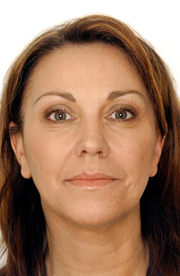Is Restylane safe?
Yes. Restylane has been used safely by dermatologists and plastic surgeons since 1996 worldwide. Because Restylane is non-animal-based and fully biocompatible, allergy testing is not required. There is virtually no risk of animal-based disease transmission or allergic reaction. The most commonly reported side effects were temporary redness and swelling at the injection site. These effects typically resolve within two to three days.
How is Restylane different from Botox?
Restylane is a natural cosmetic filler. In contrast, Botox is a drug that blocks nerve transmission and relaxes the underlying muscles. Many patients have been very pleased after receiving treatment with both products.
What is Restylane made of?
Restylane is the first and only cosmetic dermal filler made of non-animal-based hyaluronic acid. Hyaluronic acid is a natural substance that already exists in the human body and is used to provide volume and fullness to the skin. The hyaluronic acid in Restylane is a crystal-clear gel called NASHA, or Non-Animal Stabilized Hyaluronic Acid. NASHA is biodegradable and completely biocompatible with human hyaluronic acid.
How is Restylane different than other hyaluronic acid-based products?
Unlike other hyaluronic acid-based products, such as those made from rooster combs, only Restylane is non-animal-based. This quality virtually eliminates any risk of animal-based disease transmission or allergic reaction.
How long does Restylane last?
Studies have shown that the average treatment results last up to six months or even longer. The unique NASHAT technology helps maintain the cosmetic effect until the injected material is nearly gone.





